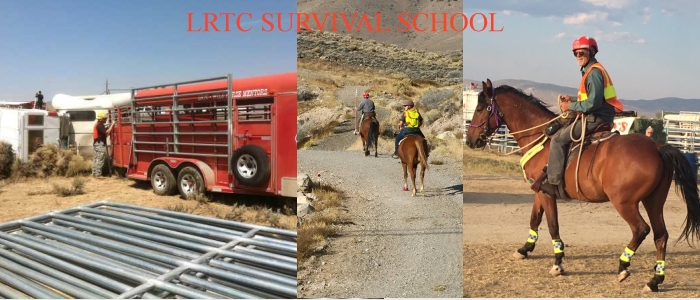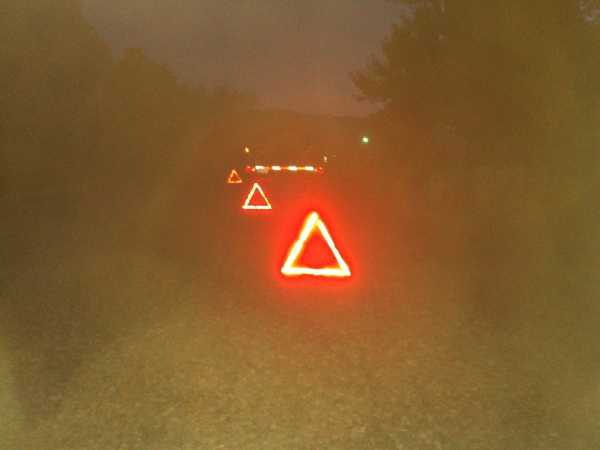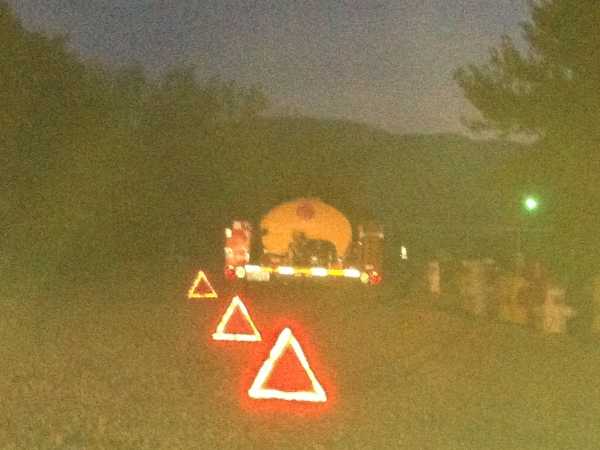|
Amber reflectors are required on each side near the front and red reflectors are required on each side near the rear as well as on the rear if combination tail lamp-reflectors aren't used.
Reflectors are relatively inexpensive however the adhesive type do tend to fall off during rough service or when exposed to extreme elements. We have found the stick-on types that also have mounting holes to be very reliable. We'll stick them into place, then secure them with 1/8 inch pop rivets. A small amount of extra installation effort can save on labor later on.
Many states require DOT red and silver striping on larger trailers. We find them to be a great safety feature for all trailers, especially trailers that are painted darker colors. Aside from increased visibility, if we have a lighting failure or we are parked on the side of the road, a thorough striping job can prevent a costly accident.
This is the standard lighting and striping configuration for the rescue team's trailers.
(We also add a distinctive reflective color stripe that matches the color code of equipment carried.)
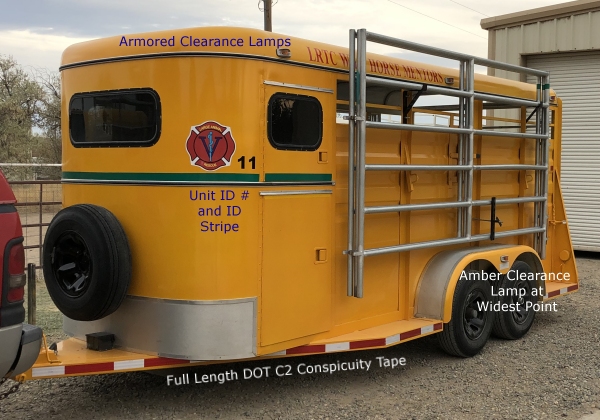
In addition to required lighting, we typically install an automatic backup lamp, utility loading lamps and interior lamps. The interior lamps should be designed to provide adequate light for loading and working inside the trailer but not produce outside glare when transporting animals in a lighted trailer. Trailers also have automatic backup alarms that can be manually temporarily disabled when backing up near agitated animals.
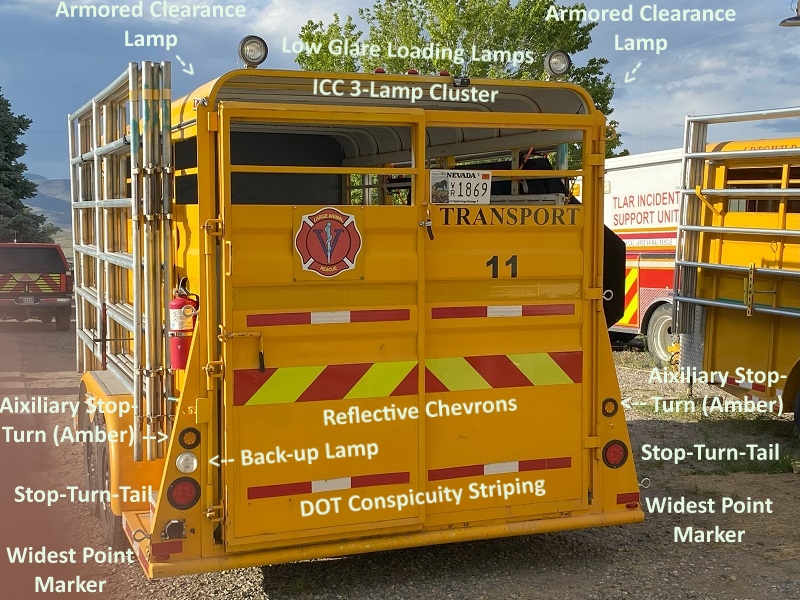
Amber auxiliary stop and turn lamps above the standard red lamps placed closer to "line of sight"
can attract additional attention from following motorists when reducing speeds or changing direction.
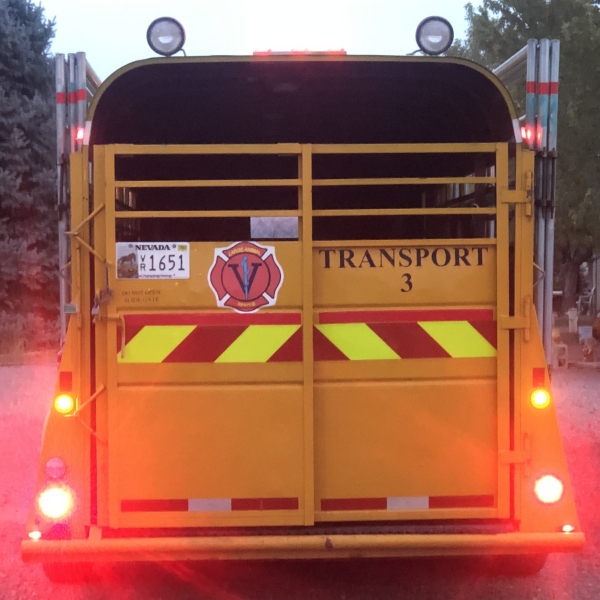
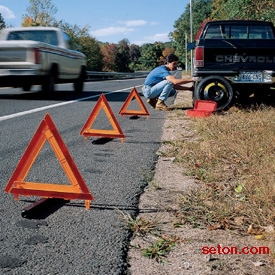 Most states also require any vehicle (including trailers) that are over 80 inches wide to carry reflector stands or triangles that can be put out to warn approaching motorists if the vehicle is disabled on or alongside the roadway.
Most states also require any vehicle (including trailers) that are over 80 inches wide to carry reflector stands or triangles that can be put out to warn approaching motorists if the vehicle is disabled on or alongside the roadway.
Placement.
2-way traffic: One reflector within 10 feet of the vehicle, a second reflector approx. 100 feet behind the vehicle and a third reflector approx. 100 feet in front of the vehicle.,
1-way traffic: Same as above except that the third reflector shall be placed approx. 200 feet behind the vehicle.
| 
